Learn More
- Bends and straightens arms and legs when laying on the back
- When laying on the back, will turn the head from side to side to track toys
- Rolls from stomach to back from both sides
- Clears face and turns head when laying on the stomach
- When laying on the stomach, lifts head/shoulders to 45 degrees bearing weight on forearms or hands
- Rounded back when supported sitting
- Raises head at midline and holds in alignment when suspended vertically
- When held upright with feet placed on surface, will lift one foot and then the other in walking movement
- Grasps a rattle
- Laying on the back, keeps head in midline while bring hands together to midline
- Grabs feet with hands while lying on back
- Reaches and grasps toys, plays with toys
- Rolls back to stomach and stomach to back
- When on stomach, lifts head and chest with weight on forearm and hands
- Holds head upright and steady when tilted sideways
- Beginning to maintain balance in sitting (propped)
- Laying on the stomach, shifts weight side to side to lift arm and reach towards toy
- Plays with toys laying on the side
- Uses arms to move forward 3 feet-pivots on stomach
- Pulls to sit holding adult’s fingers
- Maintains sitting without help and play to reach for toy
- Retrieves a toy in sitting and returns to upright while maintaining balance
- Transfers toys from one hand to another
- Bangs toy on surface
- Attains sitting independently from laying on back
- Maintains sitting while playing with a toy
- Brings two toys together in midline
- Claps hands
- Places object in container
- Comes to hands and knees form stomach and begins to rock back and forth
- Creeps forward on hand and knees with opposite arm/leg movement
- Creeps over adult’s leg
- Pulls to standing
- Stands without support
- Walks a few steps with support
- Comes to standing without support
- Walks independently
- Lifts foot to contact ball
- Begins to walk sideways and backwards
- Creeps up and down steps on hands and knees
- Rolls ball forward sitting without loss of balance
- Throws a3 inch ball in any direction without losing balance
- Opens book
- Places more objects in container
- Stacks 2-3 cubes
- Runs forward 10 feet
- Walks with 1 foot on line
- Jumps forward 4 inches without falling
- Jumps down from small step without assistance
- Walks up steps without support from wall or rail (may place 1 or both feet on step)
- Kicks ball forward 3 feet
- Throws small ball forward at least 3 feet before it touches ground
- Turns pages in book
- Stacks 4-6 cubes
- Pushes with feet to propel ride on toy
- Walks well, runs, stops, steps up, squats down
- Walks up steps without support with 1 foot on each step
- Walks down steps with 1 or both feet on each step without support
- Jumps forward, 2 inches off the ground or over a 2 inch hurdle without falling
- Jumps down from step height without falling
- Walks on tip toes
- Stand on 1 leg for 3 seconds
- Kicks a ball 3-6 feet
- Catches 8 inch ball with arms extended
- Initiates overhand and underhand throws
- Remove screw on lid
- Stacks 8-10 cubes
- Strings 2-4 beads
- Pedals a tricycle with some help
- Walks up and down steps alternating steps holding on to a rail
- Runs around obstacles
- Jumps forward, down, and over obstacles with 2 footed takeoff/landing
- Walks forward on a line without stepping off
- Stands on 1 foot for 3- 5 seconds
- Hops forward on 1 foot
- Overhand and underhand throw of small ball
- Catches a medium size ball with hands
- Rides a tricycle independently
- Can build a tower of 9 small cubes
- Cuts paper in half
- Stands on 1 foot for 10 seconds
- Hops on 1 loot for 5 hops
- Walk on a line forward and backwards without stepping off
- Stand on tip toes in place for 5-10 seconds
- Walks up and down steps alternating steps, without support
- Gallops and skips forward
- Catches a small tennis ball with hands only
- Skips, runs, gallops with fluidity and coordination
- Walks on a balance beam
- Jumps over hurdles up to 10 inches high with tow- footed take off and land
- Jumps sideways, back and forth
- Ride a bicycle with training wheels
- Jump rope
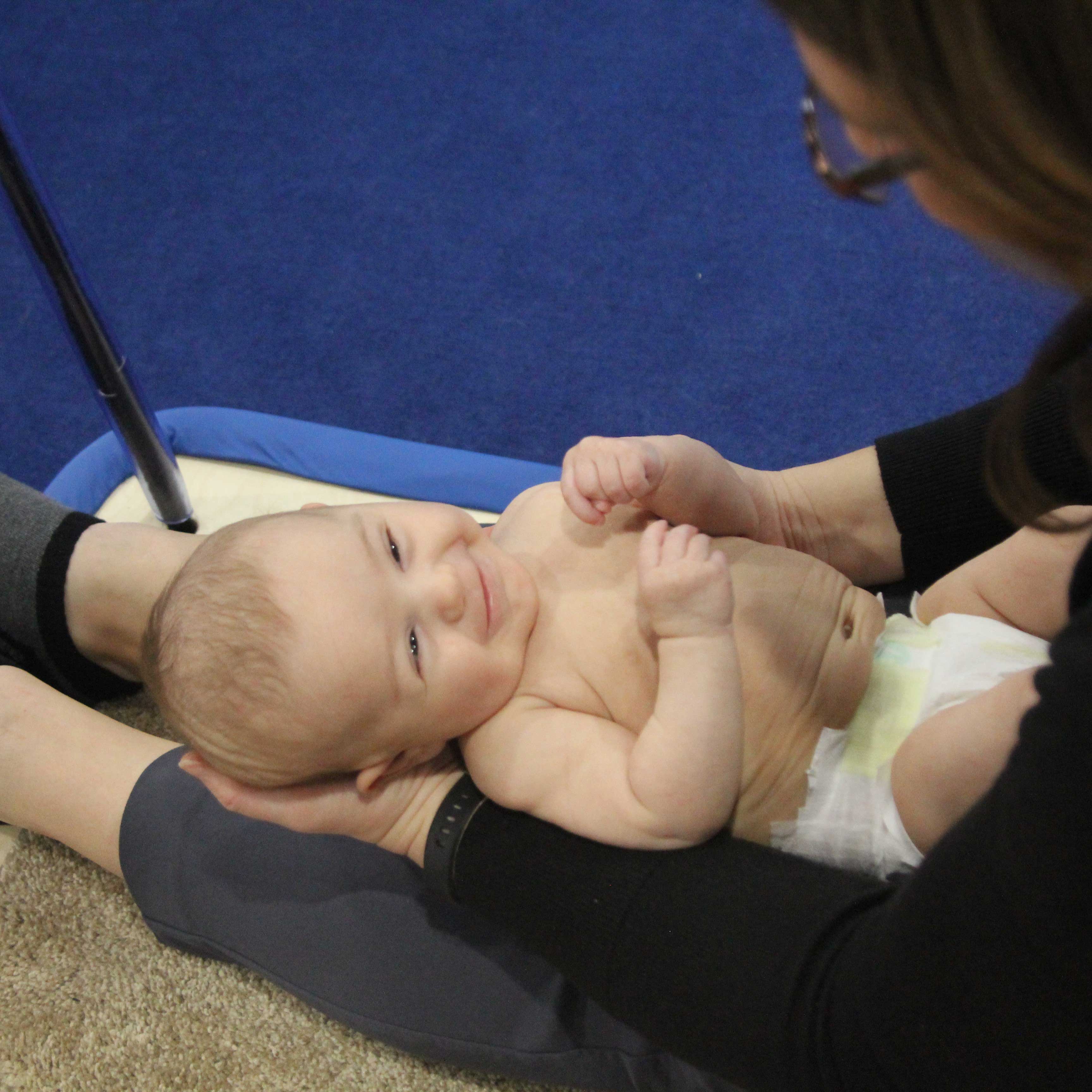
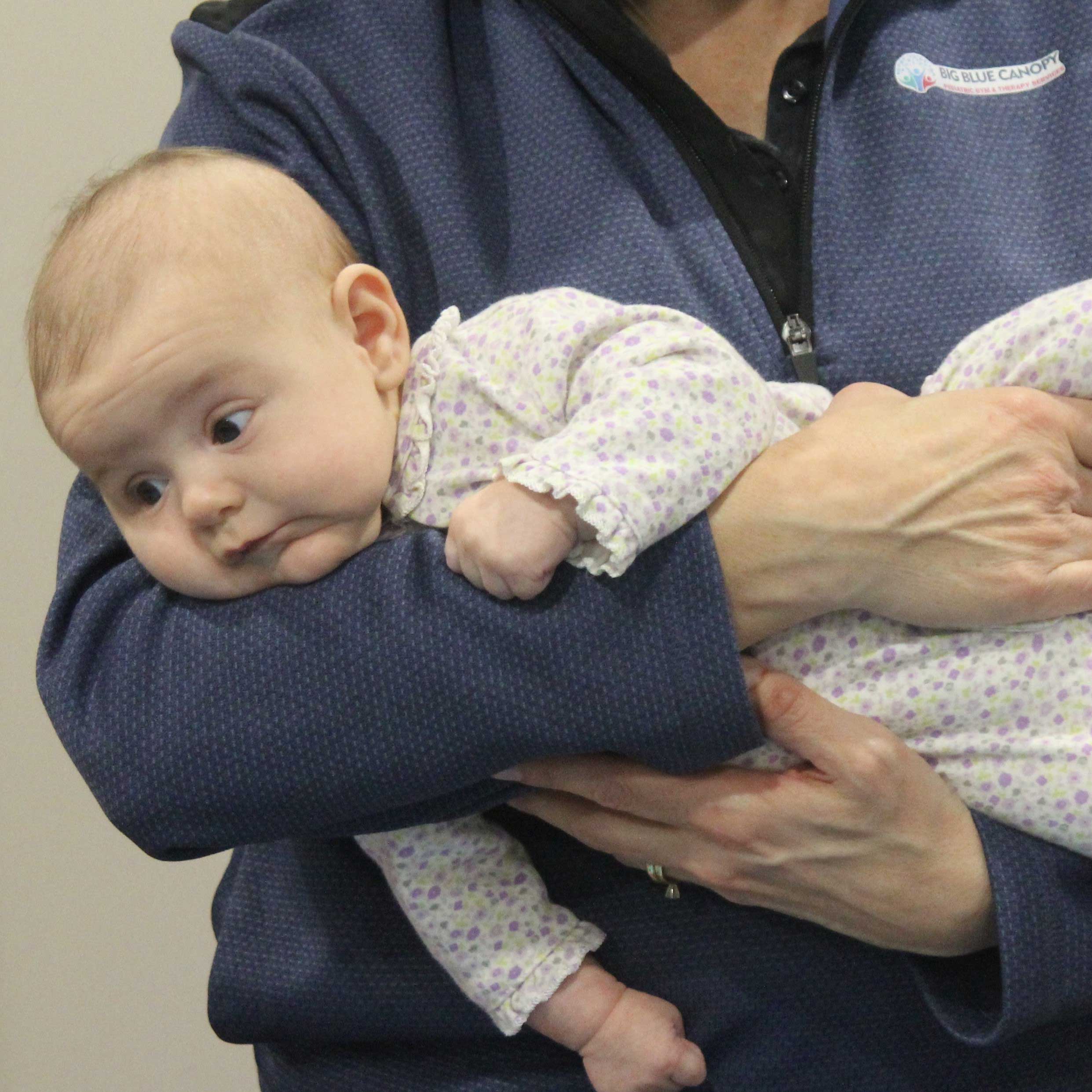
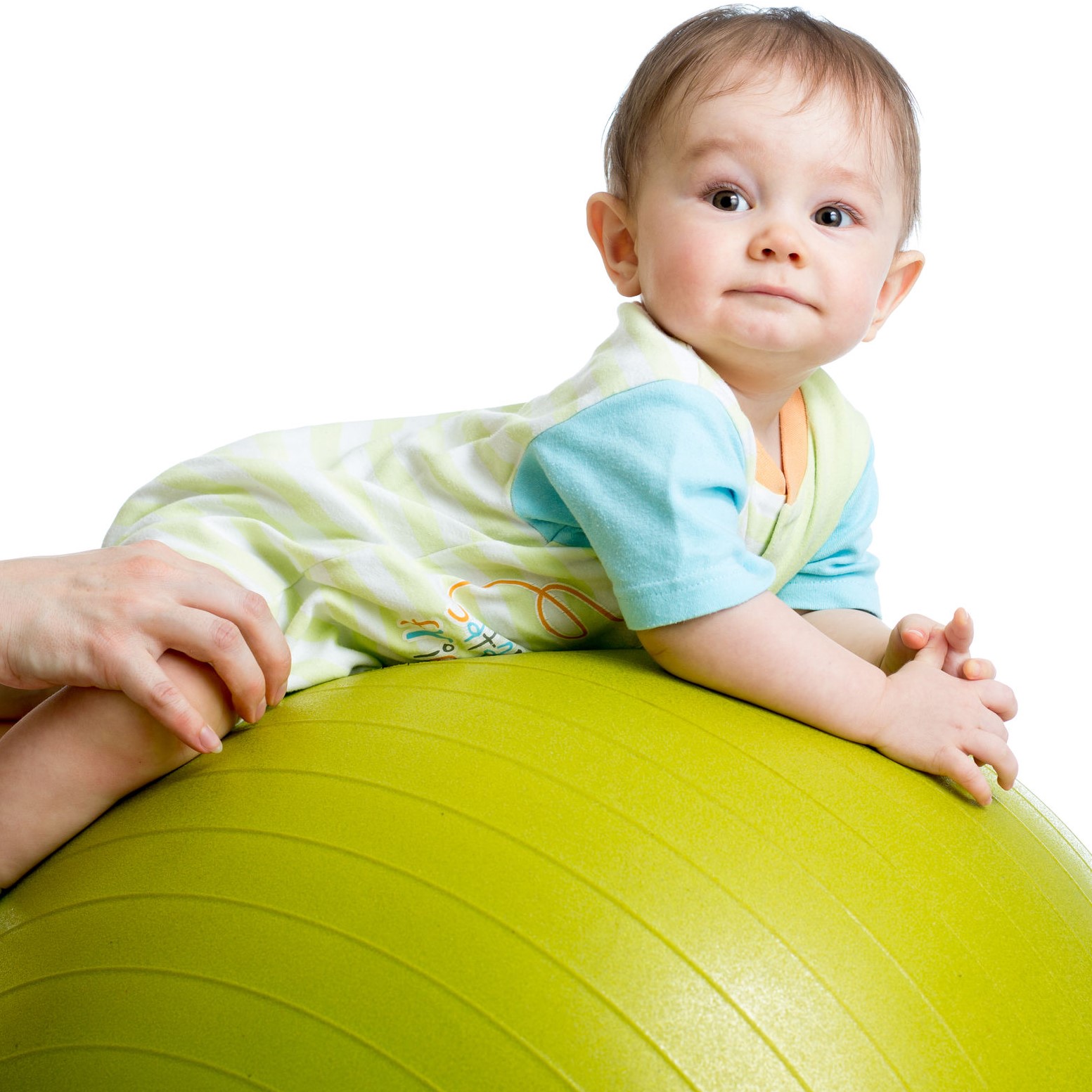
Torticollis is typically characterized as a head tilt towards one side with the head rotating towards the opposite side. Usually this involves the sternocleidomastoid muscle or SCM. Torticollis can be present at birth (congenital) or acquired after birth. Typically, both acquired and congenital torticollis are noted to have an imbalance between the flexibility of muscle and the strength of the same muscles on the opposite sides and are classified by different levels of severity. The child may demonstrate abnormal balance reactions, gross motor delay and asymmetry through the spine and pelvis. Facial and skull asymmetry can also occur due to the tightness of neck muscles and resulting forces applied to the developing skull.
In rare cases, torticollis can occur because of vision problems (ocular torticollis), neurological imbalances (benign paroxysmal torticollis), or bony deformities in the spine.
What Causes Torticollis?
Torticollis may appear shortly after birth (congenital) or later (acquired).One possibility is a cramped in utero position as seen with a multiple pregnancy or a larger baby. Another possibility is that during the birth, a muscle may be overstretched if there is difficulty with the baby going through the birth canal. At times, there can be underlying reflux or other underlying causes that may be present in acquired torticollis. Time spent in passive positioners or baby containers when the baby does not yet have good head control may cause a baby’s head to tilt to one side. Any time a baby shows a preferenceor keeps their head towards one side can lead to a muscle imbalance. Regardless of the cause, the therapists at Big Blue Canopy are trained to assess each case to help determine possibly underlying causes and to provide interventions that are tailored to your baby’s needs.
- The baby may keep his/her head tilted to one side (one ear is closer to the shoulder than the other side).
- The baby prefers or only looks towards one side
- The baby may avoid moving his/her head opposite from the preferred side
- You may observe a hand preference for reaching or bringing a toy to their mouth
- If breastfeeding, having trouble on one side or infant has preference to one breast only
- There may be a flat spot on one side of the back of the baby’s head (or maybe the hair is rubbed off more on one side)
- Asymmetry in your baby’s face
- Fussy behavior when you try to change the position of your babies head or when they are put on their tummy because they are not able to lift or turn their head.
If you notice a concern mentioned above, please speak to your child’s pediatrician. A referral to Physical Therapy may be recommended and the Physical Therapists at Big Blue Canopy are ready to help you! In fact, evidence shows that infants that are referred at a younger age spend less time in therapy and have better resolution of their concerns.
The therapists at Big Blue Canopy are experienced with the evaluation,assessment of needs, and the treatment of Torticollis.Treatment is typically recommended once a week based on the severity of the torticollis. Treatment sessions are focused on stretching the shortened neck and trunk muscles,strengthening exercises, developing righting and balance reactions, reaching developmental milestones, tummy time, use soft tissue mobilization, taping techniques and other skilled therapy interventions.
Another critical part of our physical therapy program is educating parents on what to do at home to help. We will make recommendations for home positioning for feeding, diapering, and carrying techniques to increase neck range of motion and strengthening. Home exercise program also include neck stretching, tummy time and developmental activities.Your baby is growing fast and his/her needs and exercises will change. Your therapist will reassess at each visit what the best treatment is for that day and if any changes are needed for the home exercise program. Treatment frequency may begin to decrease as we work towards successful discharge!
First, it‚Äôs important to know that flat spots on baby‚Äôs heads have become more common with the introduction of the ‚ÄúBack to Sleep‚ÄĚ program. As a part of evaluation at Big Blue Canopy our Physical Therapists look for any possible asymmetries of the skull or Plagiocephaly. Our therapists are trained in anthropometric measurements of the skull to help provide our families and pediatricians with objective measurements that can be tracked monthly to assess severity and improvement of head shape. Part of the home exercise program provided by our therapists will be to educate families about how to encourage tummy time when awake and supervised and other positioning suggestions to help improve the shape of your baby‚Äôs head. If addressed early enough, flat spots may resolve on their own with suggestions for positioning by your Physical Therapists. If positioning does not improve the shape of the head, our therapists‚Äô advanced knowledge of measuring the head shape allows us to assess when there may be a need for a referral to an orthotist. An orthotist can further assess the baby‚Äôs head shape by using a low-level laser to create a 3D digital image of the baby‚Äôs head to provide us with the most exact measurements. Based on these measurements, the orthotist may recommend a cranial shaping orthoses or helmet. Your therapist can help support you during this process by listening to your concerns and answering any questions you may have about a cranial shaping orthoses or helmet.
Prognosis and outcome of treatment depends on:
- Severity of Torticollis- Grading using Muscle Function Scale
- Age at which the child was referred for Physical Therapy Treatment
- Positioning and compliance with Home Exercise Program
At Big Blue Canopy webase our decision to discharge from Physical Therapy on the criteria provided by the 2018 Evidence-Based Clinical Practice Guideline for CMT (Congenital Muscular Torticollis) provided by the APTA:
- Passive neck range of motion within 5 degrees of non-affected side
- No visible head tilt
- Age appropriate motor development
- Equal active movement patterns on both sides
- Caregivers understand exercises and monitoring
Follow up is scheduled at 3 months after discharge.
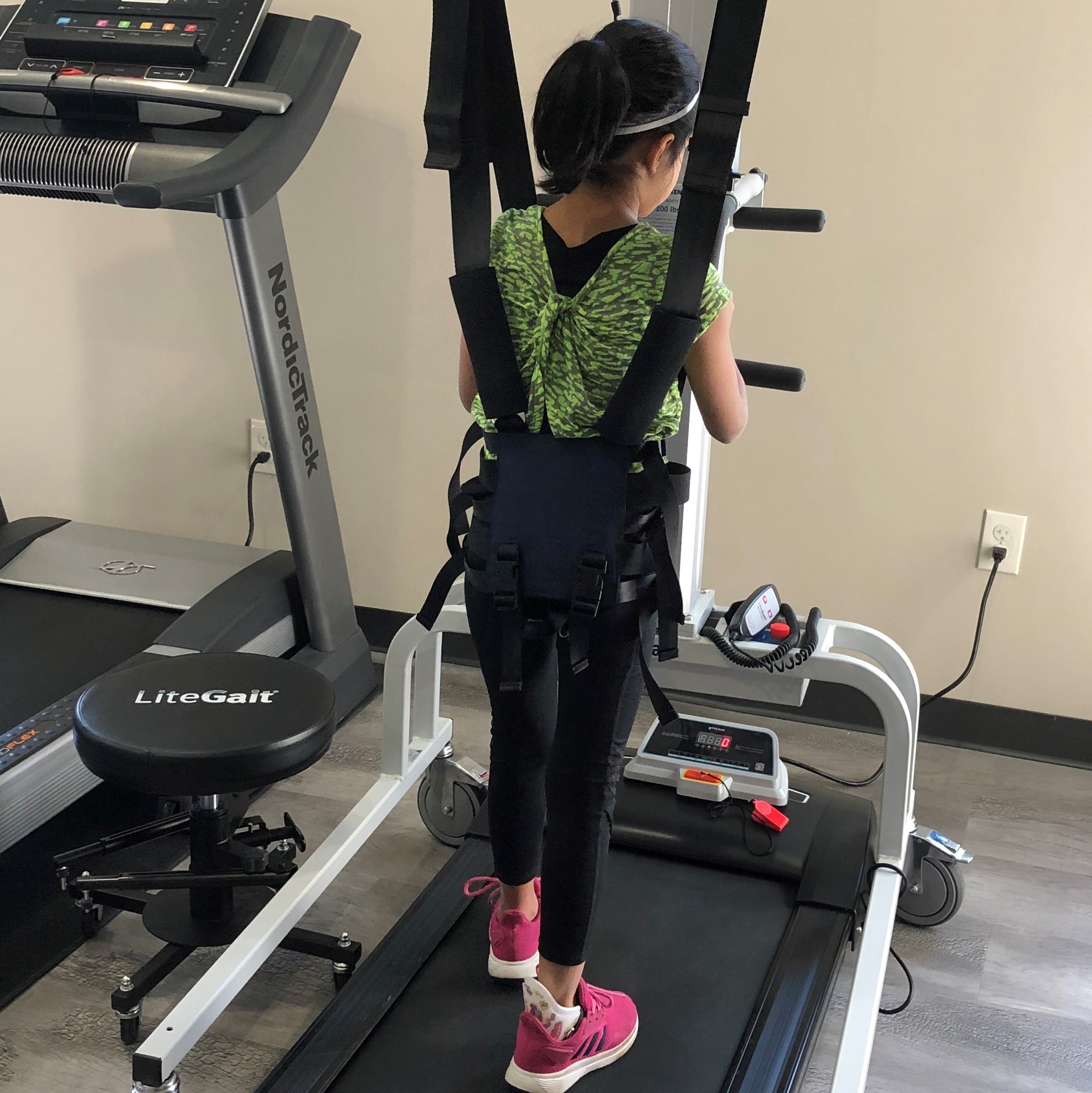
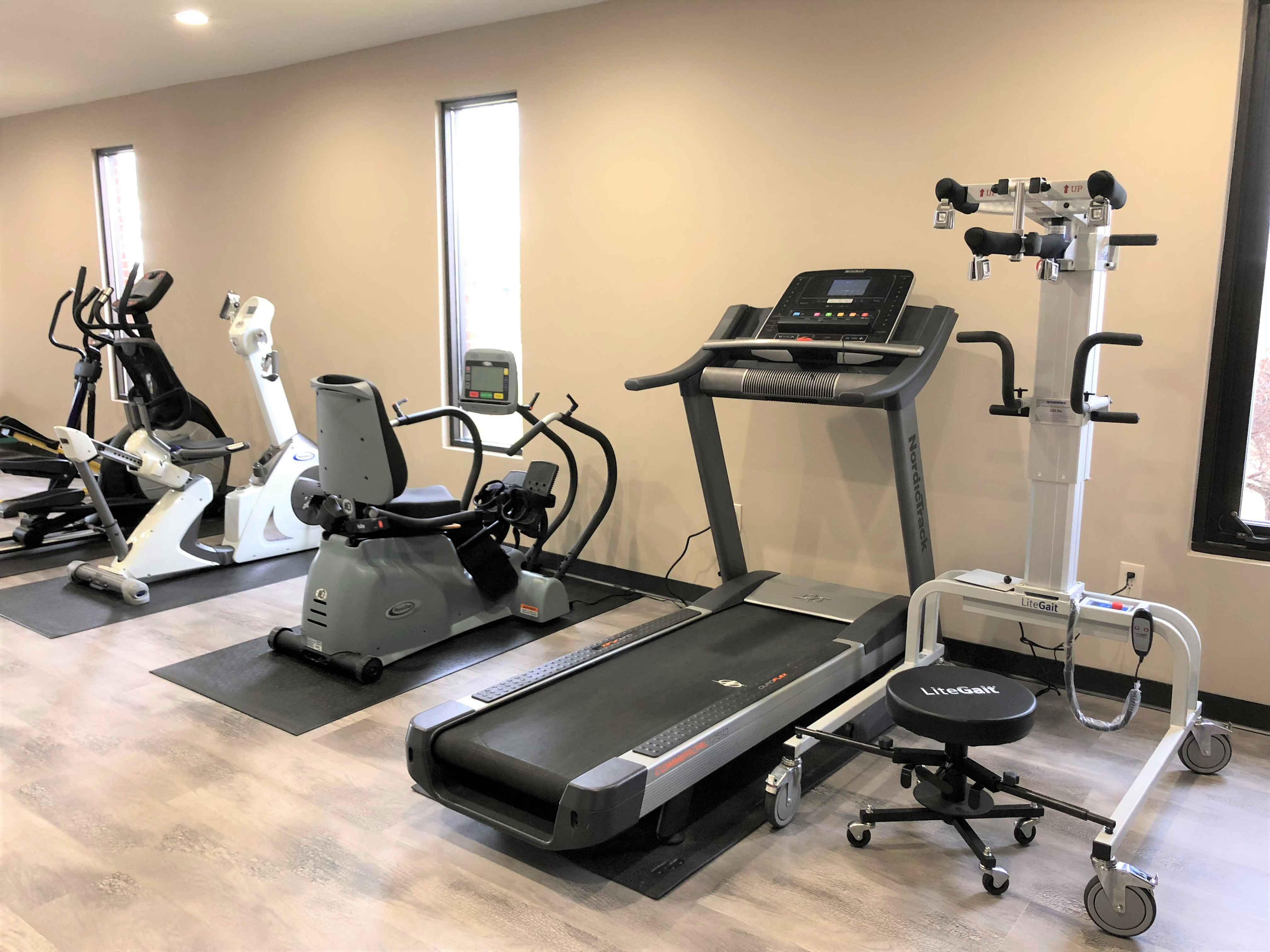
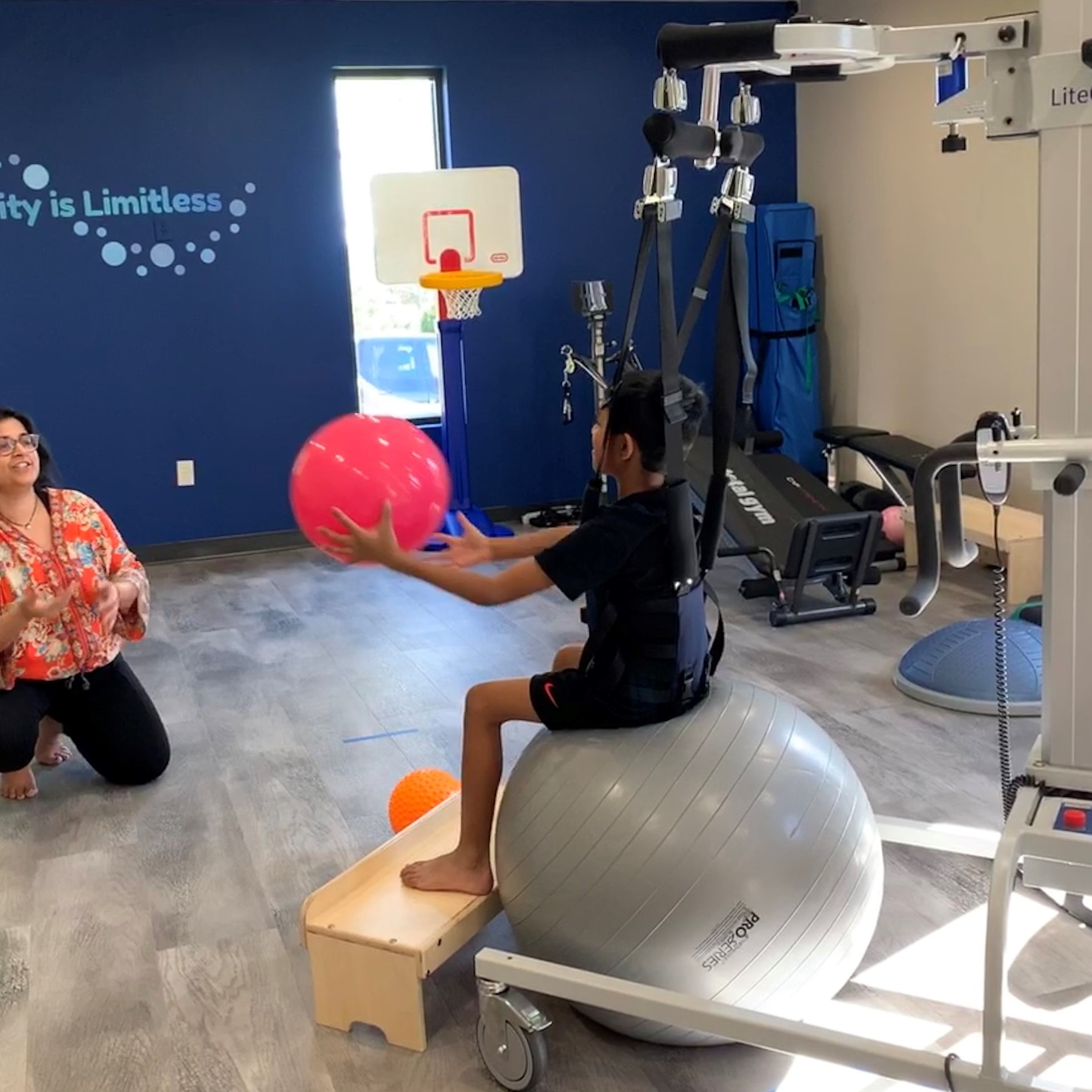
Anyone from about age 1 through adulthood who is affected by neurological, genetic, or musculoskeletal disorders that prevent them from walking or using assistive devices for mobility such as Cerebral Palsy, Down Syndrome, Spina Bifida, Spinal Cord Injuries, Stroke, Traumatic Brain Injury, Hemiplegia, Orthopedic Conditions, and more.
The goals set for treadmill training will depend on the current level of function of the client, but may include:
- The development of walking skills
- An improved or more symmetrical walking pattern
- The ability to walk longer distances (walking endurance)
- Increasing walking speed
- Improved balance
- Cardiovascular fitness
- Greater weight-bearing abilities to strengthen their bones
Our program is performed as a part of the 60-minute treatment session with the therapist including other treatment techniques such as stretching, strengthening and balance exercises as well as overground training using the LiteGait¬ģ or PUMA to promote weight-bearing and optimize outcome. Prior to incorporating BWSTT into the plan of care, a detailed assessment of the client's abilities is performed. Functional mobility is measured using outcome measures such as:
- Timed Up and Go
- 6 Minute Walk Test
- 10 Meter Walk Test
Gross motor ability may be assessed using tests such asGross Motor Function Measure, Peabody Developmental Motor Scales- Second Edition or Bruininks-Oseretsky Test of Motor Proficiency Second Edition.
General recommendations for training:
- 15-30 minutes each session
- Speed- 0.5 mph-3 mph
- 2-3 times per week
- For a minimum of 6 -8 weeks
Over time, the intensity of training can be heightened by increasing the walking speed,duration of the exercise and the slope of the treadmill. The amount of body weight supported will be lowered as a patient improves in their ambulation skills. A detailed Home Exercise Program will also be provided for the family to improve strength, balance and maintain optimal range of motion to maintain the benefits they have achieved.
BWSTT is well supported in research. Here are just a couple of articles supporting BWSTT:
https://www.ncbi.nlm.nih.gov/pmc/articles/PMC4580974/ https://journals.lww.com/pedpt/pages/articleviewer.aspx?year=2009&issue=02110&article=00004&type=Fulltext https://journals.lww.com/ajpmr/Abstract/2007/07000/Effect_of_Treadmill_Training_with_Body_Weight.5.aspx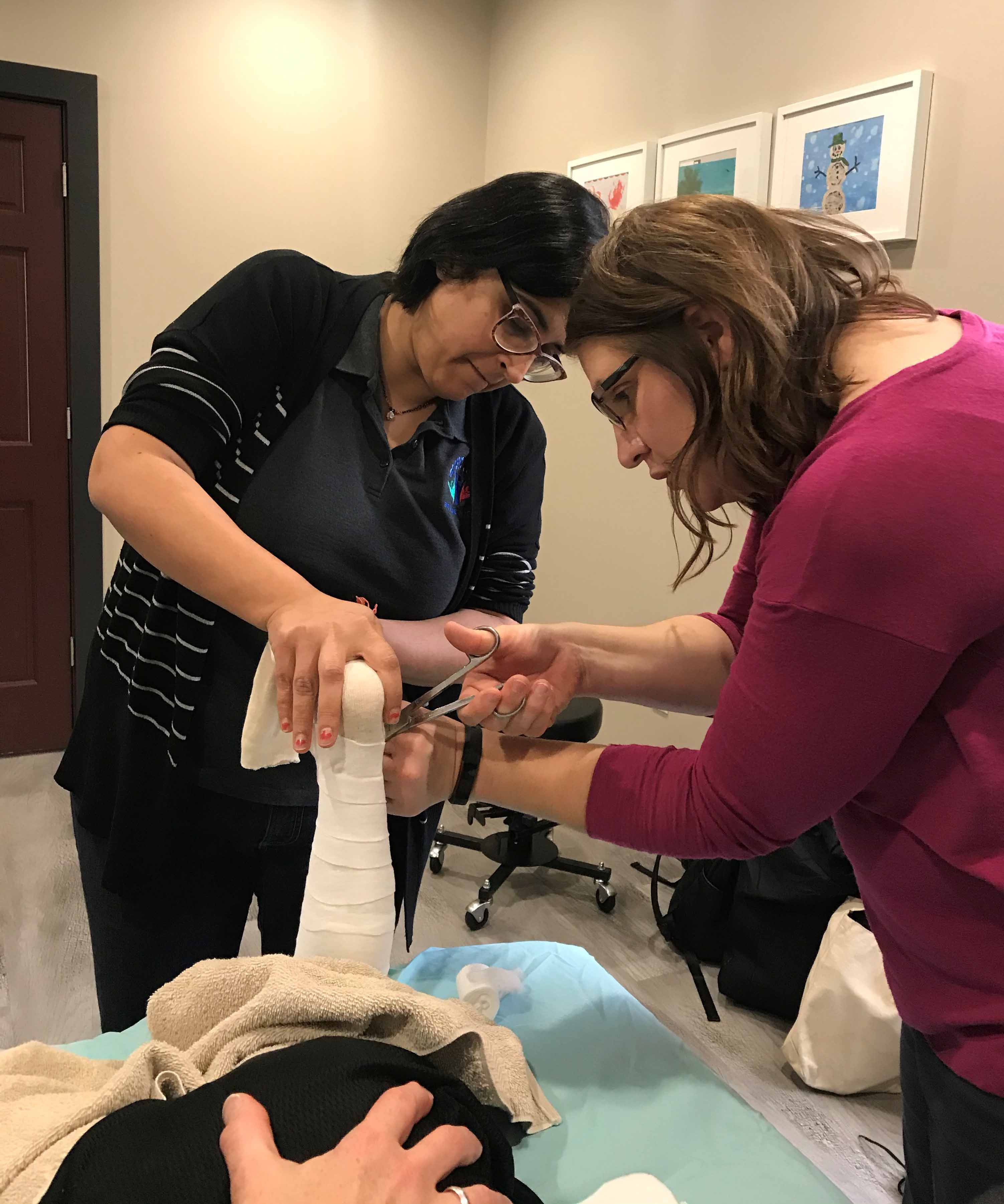
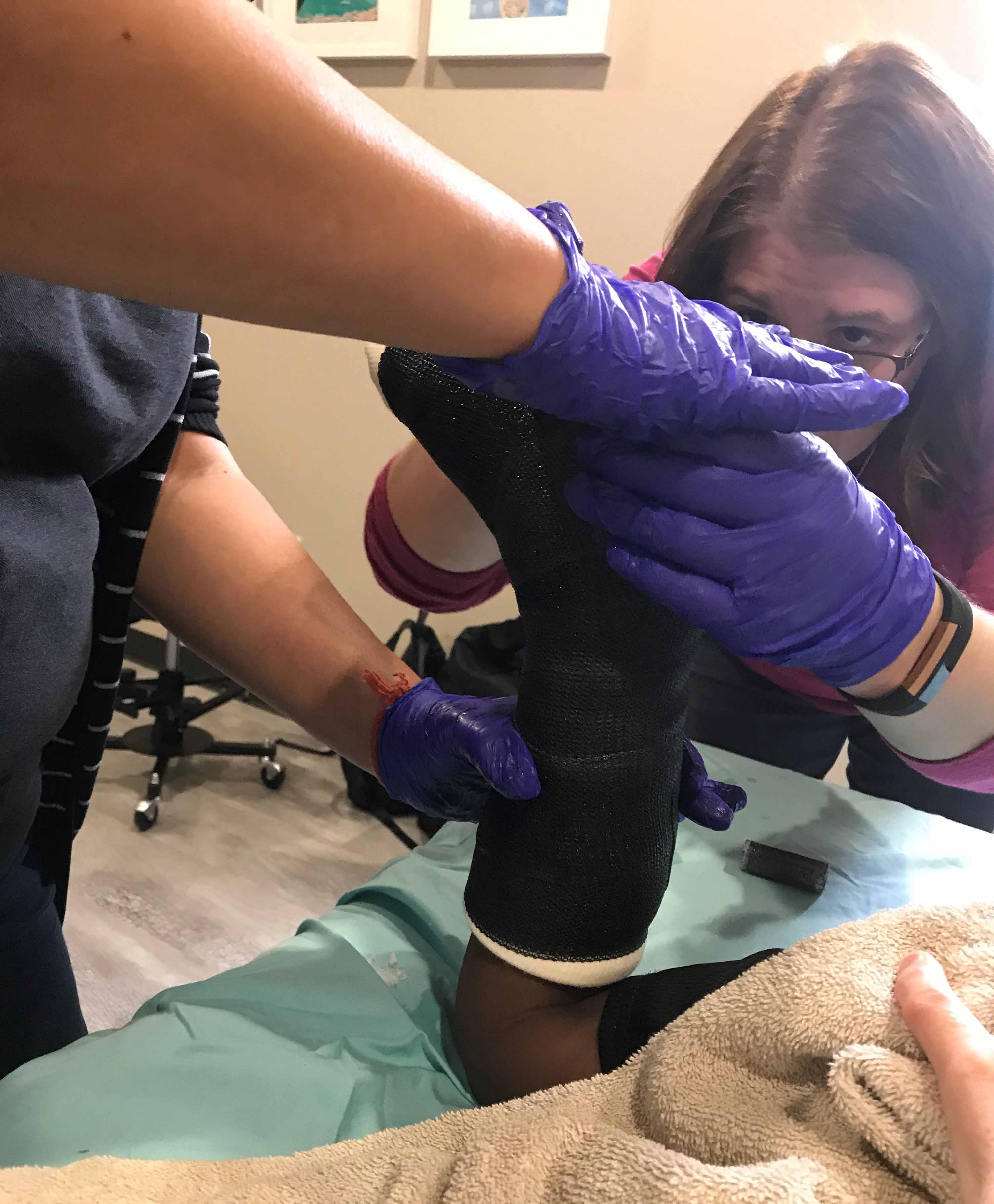
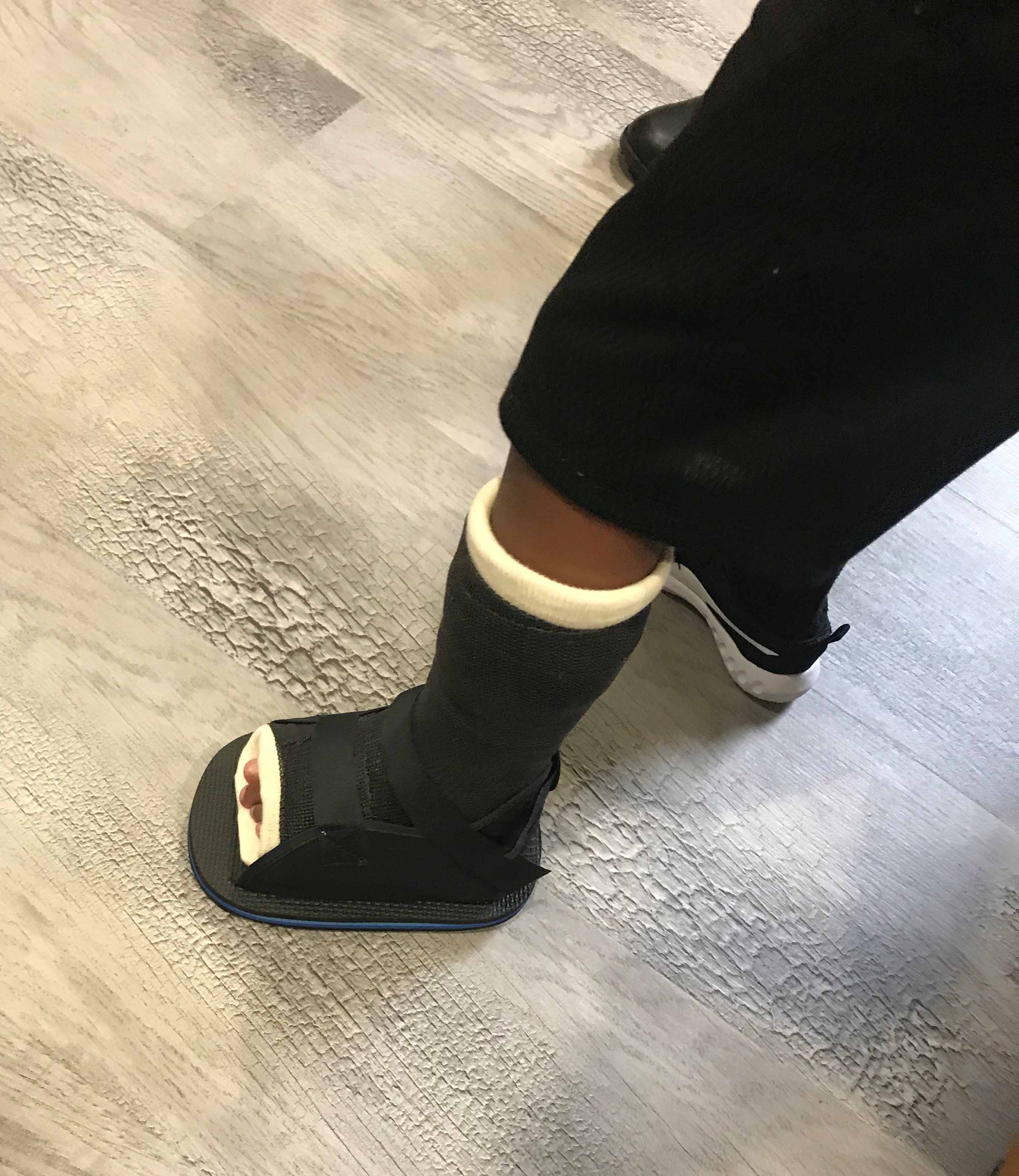
Serial casting is therapeutic technique performed by Physical and Occupational Therapists. A ‚Äúseries‚ÄĚ of casts are applied to a joint in either the lower or upper extremity where soft tissue restrictions are present. Serial casting utilizes a low-load prolonged stretch which is well supported in research to provide a significant increase in muscle length as compared to short, higher load stretches. Serial casts may be fabricated with hard fiberglass, soft cast (semi-flexible) material, and may also be bivalved to make a removal splint. Serial casting is a conservative approach to increase joint range of motion and is a less expensive and non-invasive approach compared to surgical lengthening surgeries.
Children and Adults with the following diagnoses, and not limited to, may benefit from serial casting:
- Cerebral Palsy
- Idiopathic Toe Walking
- Traumatic Brain Injury
- Stroke
- Hemiplegia
- Spinal Cord Injury
- Spina Bifida
- Toe Walking secondary to an Autism Spectrum diagnosis
- Muscular Dystrophy
- Down Syndrome
- Contractures secondary to neuropathy
- Foot Deformity
- Other neurological impairments that may result in muscular contractures
Serial casting can help prevent the need for surgery, improve the fit and function of orthotics, help maximize the benefits of Botox, provide improved alignment for optional function, improve ambulation, improve positioning within standers and wheelchairs and allow improved positioning to ease hygiene care..
If needed, our therapists will also work with specialists to help coordinate casting along with Botox injections. Typically, casts are applied once a week with a stretch at a low-load. Each week, the cast will be removed, range of motion will be re-assessed and the joint and skin will be monitored for effectiveness and tolerance to casting. A new cast will be applied while positioning the joint into an increased stretch. Therapists will adjust plans as needed to meet the needs of the patient.
Serial casting appointments are typically longer than traditional appointments and will be scheduled on an individual need and basis based on the therapist’s recommendation. We work with each family to come up with a successful schedule. The typical casting length of care is 4-6 weeks. Each week, the therapist will provide verbal and written instructions on cast care management, wearing schedules, and/or precautions. Following the completion of the casting, the therapist will help to coordinate any orthotic needs, discuss long term management, and work to improve the strength and function of the joint with the newfound range of motion.

